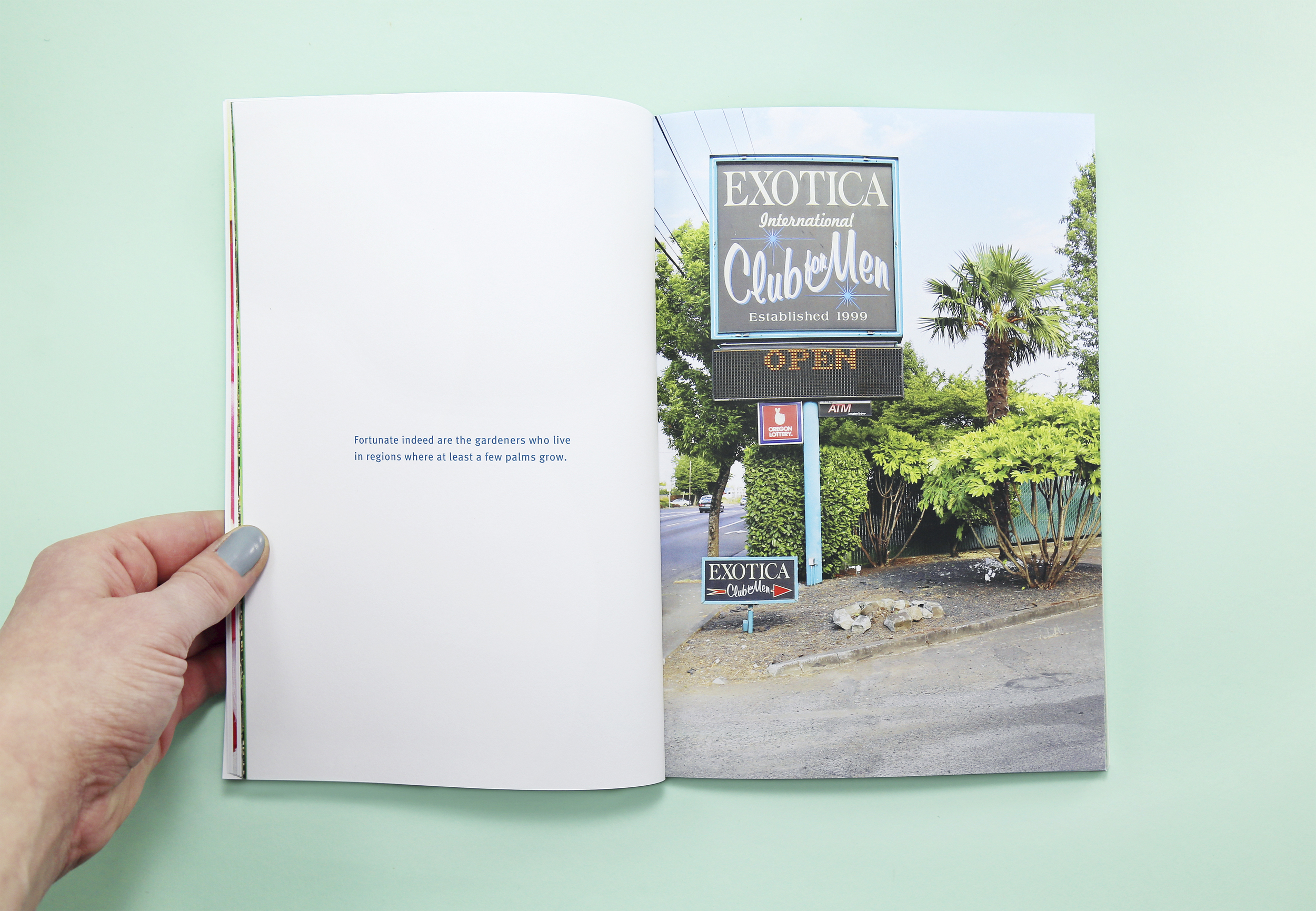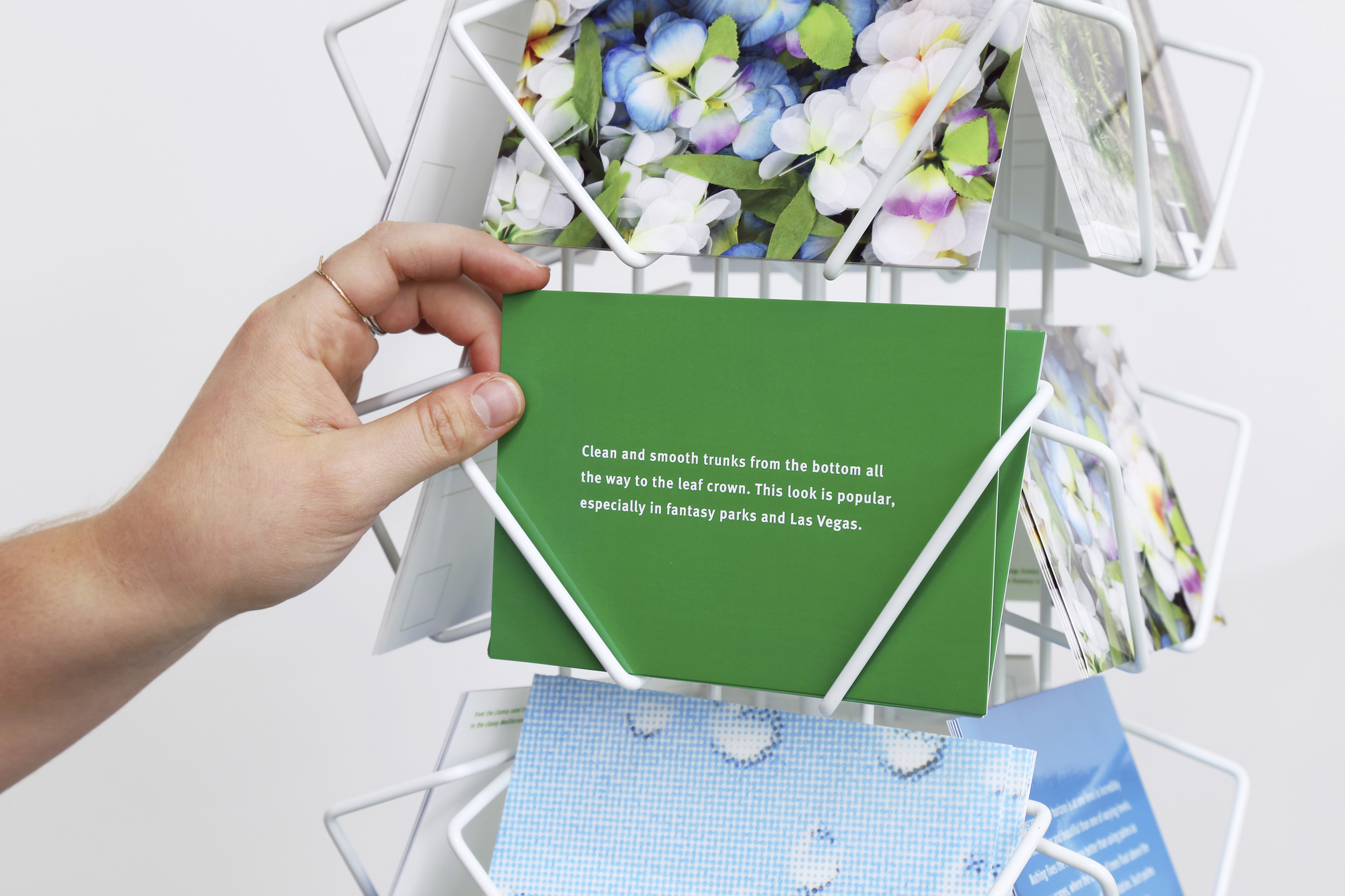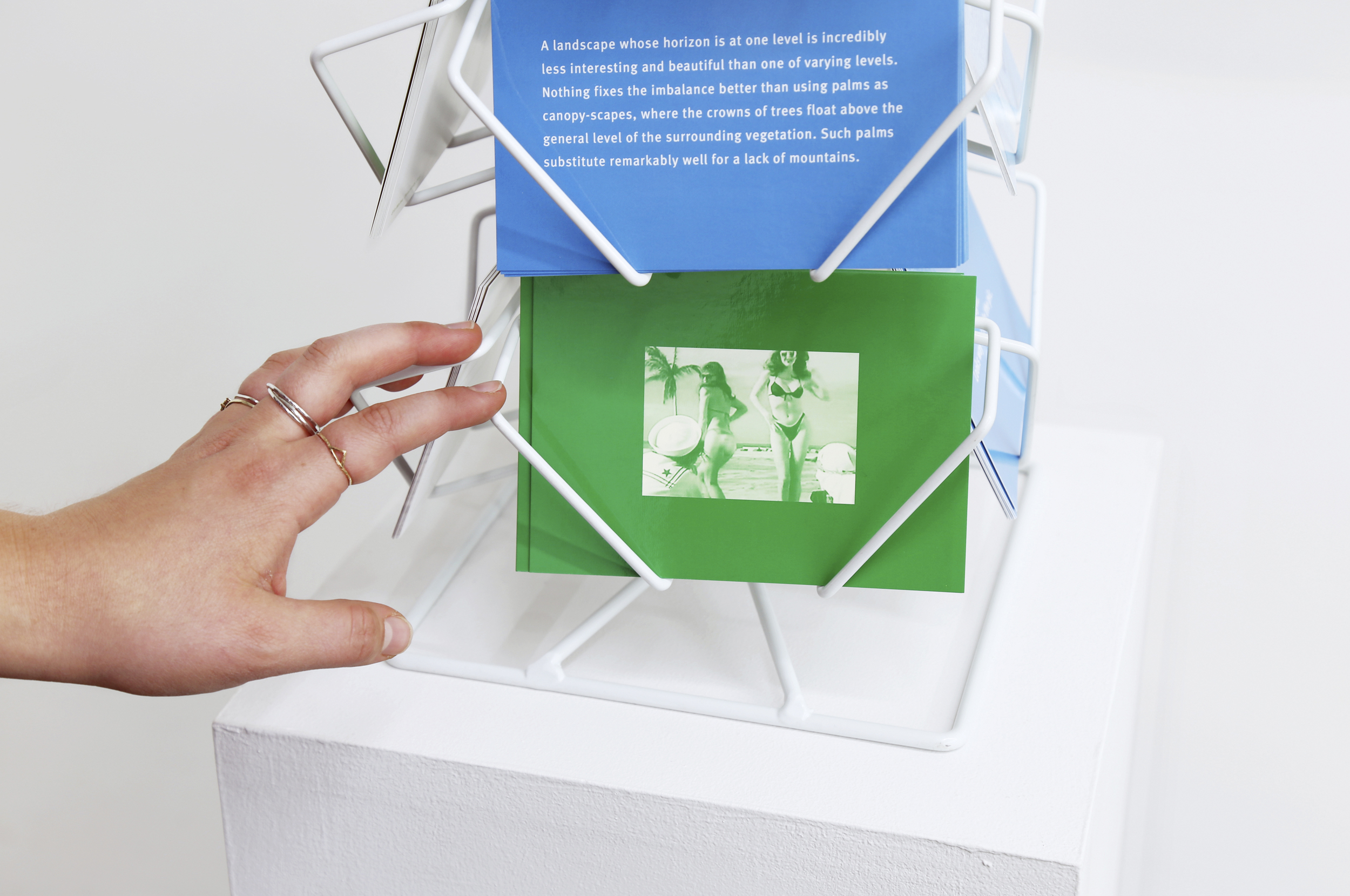Transplants 2015
artist book, 116 pages with edition of postcard inserts
Inspired by the unexpected yet commonplace presence of palm trees in Portland, Oregon. When I moved to Portland after living in Idaho and Los Angeles, I began taking regular walks to make the unfamiliar familiar and immediately noticed the plants. An anomaly from standard perceptions of the Pacific Northwest, the palm tree pointed to assumptions that are often associated with place and emphasized that tendency to flatten the complexities of geographic identity. For me, the plant was a reminder of LA where palm-lined avenues have become an accepted, aggrandizing, and oversimplifying symbol of the sprawling and diverse metropolis. The majority of palm species are non-native to Southern California and were utilized to brand the region as a “rightful”, utopic conclusion to American expansion. In the American west, palms exist in a web of symbolism having inherited the ideology of Orientalism and colonialism.
Portland palms, largely a species from China, Japan, and Northern India, are a reminder of living in a global, postcolonial world. Among the evergreens, the trees fall short as a believable stand-in for relaxation or paradise. Adorning luxury car dealerships and aging buildings, palms are more akin to props that highlight politics of the “natural” and escapism that are often better camouflaged. Palm trees do well in the temperate Northwest. However the plants are more clearly “outsiders” than many of the other introduced species throughout the region. In a city that is rapidly changing and sold for its lifestyle, palms trees are a signifier of tensions surrounding labor and leisure, and how perceptions and imagery of place, landscape, culture, and people are generated, branded, and sold





